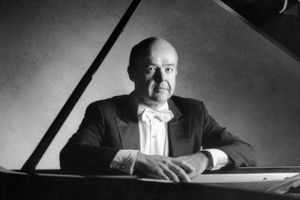|

Biography of Alexander Toradze
| |
– How and when did the idea for the Alexander Toradze Piano Studio emerge?
– Studio performances, a practice known in Soviet times (and even before that) as “class concerts” were, and probably still are, a tradition of many conservatoires and music schools. We grew up with those traditions.
In 1991, after being appointed as Martin Endowed Chair Professor of Piano at Indiana University South Bend (USA), I began to invite talented young musicians from Russia, Georgia and other countries to join my studio. That’s how the Toradze Piano Studio came into being.
It was only natural for me to try to emulate our old tradition of “class concerts”.
Our first concert as a studio took place in 1994 at New York’s Steinway Hall. In 1995 the studio’s musicians were invited to St Petersburg by Valery Gergiev to participate in the Stars of the White Nights festival where we performed almost all of Stravinsky and Prokofiev’s piano music. Since then idea of mono-programming has become a tradition of the studio.
Performing every work for piano by one composer in chronological order in one or two days is very challenging but also very satisfying. With such programmes, both performers and the audience are able to follow, opus by opus, the ways a composer’s style develops and changes.
– Do you invite musicians to study with you or do they come themselves?
– Sometimes I invite students, but more frequently they approach us themselves.
– What criteria guide you when selecting pupils?
– Love of music and the desire to perform. And to perform you have to work hard and make many sacrifices.
As the studio performs concerts, our young musicians – after receiving a certain level of knowledge and intense training – should be ready to take part in concerts.
– Are there any age restrictions for pianists wishing to enter the studio?
– I never set any rigid boundaries, but the studio normally has between eight and ten students aged from eighteen to thirty-five.
– What are the prospects for the studio?
– The prospects of the studio are the prospects of its members. The main aim of our performances is to introduce the public to new talents and to prepare the latter for their individual careers as soloists and future teachers.
Several studio alumni are now successful concert pianists as well as teachers at America’s leading universities.
Young musicians at the studio and its alumni are invited to take part in various international projects. For example, The International Piano Festival. In March last year Vakhtang Kodanashvili, Edisher Savitski and Nikita Abrosimov (guests at this year’s International Piano Festival) participated in Milan’s Sergei Rachmaninoff Festival at the Teatro alla Scala.
Of course, my hope always was and remains that following Toradze Piano Studio performances some of my pianists will be invited to perform as soloists. Numerous alumni and current studio members have received such engagements. Among them are Alexander Korsantia, Maxim Mogilevsky, George Vatchnadze, Genadi Zagor, Sean Botkin, Ketevan Badridze, Svetlana Smolina, Irma Svanadze, Sangwon Kim and Ignasi Cambra.
– Could you give a brief description of each of the pianists of your studio who will be appearing as guests at this year’s piano festival?
– It’s impossible for me as a former and current teacher to describe these talented pianists and wonderful people in just one word. I can say that they are very talented, very different and very dedicated to music.
They have one thing in common – their passion for music. Even so, they have a different understanding of what passion means in music and in life.
Speaking with Svetlana Nikitina
|